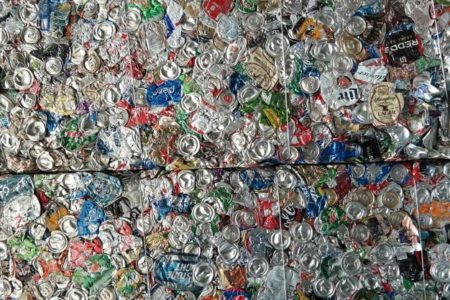July 25, 2019 – Here are the headlines that popped up in the last few days from the world of waste management:
The deal will have a consortium of companies processing 500,000 tons of municipal waste and 200,000 tons of construction and demolition waste annually beginning in 2020, to provide heating to the city of Belgrade, and reducing natural gas consumption from the city’s largest thermal-energy plant by 80% during the cold season. It will also lead to the closure of a 40-hectare (98-acre) active landfill site, one of the 50 largest in the world.
3-Stage Membrane for Biogas Upgrading Plants Coming to New York State
A Dutch company, Bright Biomethane, is upgrading biogas produced from manure in Upstate New York. The gas will be compressed and then injected into pipelines to be used to generate energy. The 3-step membrane technology provides maximum methane (CH4) recover exceeding 99.5%.
Japanese Ministry of Economy Trade Backs Plastic Waste to Hydrogen Tech
A United Kingdom-based company, Powerhouse Energy, is bringing is DMG process to Japan, a method to convert plastic waste to hydrogen to generate electricity. Under the name Waste2Tricity, the goal will be to create a zero-carbon emitting energy source while removing waste plastic from the environment. Japan is currently investing in the development of a Road Map for Hydrogen Infrastructure.
First Large-Scale Organic Waste to Energy Facility to Go-Ahead in New Zealand
New Zealand is launching its first large-scale waste-to-energy plant to take food waste and turn it into renewable biogas energy. The energy derived will be used to power greenhouses as well as New Zealand homes. The government noted that every year 327,000 tons of food waste enters landfill sites in the country. By turning it into biogas, it is hoped it can help lower overall national carbon emissions. The Reporoa Organic Waste Recovery Facility will receive its first supply of organic waste from a neighbouring greenhouse tomato grower, amounting to 1,000 tons of tomato vines per year. The facility’s capacity is 20,000 tons annually and should be more than adequately supplied by neighbouring dairy processors, commercial bakeries, milk sheds, and fruit grading facilities.
Creating a Circular Economy Around Waste Management
The world of waste management these days talks about the circularity gap. The gap is defined as the delta between what our modern society creates and discards, and what can be achieved by repair, reuse, remanufacturing, refurbishing, and recycling. This is what is meant by a circular economy arguing that climate change and material use are inheritably linked. It is estimated that 62% of global greenhouse gas (GHG) emissions, not including what is produced from land use and forestry, comes from the extraction, processing, and manufacturing of what we consume. The remaining 38% of GHG emissions come during delivery and use. That’s why the waste management world is gung-ho about altering our existing economic paradigm – reducing dependence on new extraction of resources by reusing what is already in our hands, and ensuring that any residual waste products can also be repurposed. In this way, economic growth no longer has to be tied to rising carbon emissions.
The C40 cities group, of which I have written often in the past, (just type “C40” in the site search window to find currently, 16 different articles) currently has 94 members. And they are into a zero-waste initiative in which city members have pledged:
- To reduce municipal solid waste generation per capita by a minimum of 15% by 2030 compared to 2015.
- To reduce municipal solid waste disposed of in landfill or in incineration by a minimum of 50% by 2030 compared to 2015.
- To increase the diversion rate of municipal waste by 70% by 2030 compared to 2015.
The actions that C40 members have agreed to achieve the above three milestones include:
- Reducing food losses and the wasting of food at the retail and consumer level by decreasing losses along production and supply chains, minimizing the production of surplus food, and facilitating safe food donation and by-products for feed production.
- Implementing source-separated collection of food scraps and other organics and creating a treatment infrastructure that recovers nutrients, energy and contributes to the restoration of carbon storage capacity in soils.
- Supporting the implementation of extended producer responsibility and sustainable procurement, and the reduction and banning of single-use and non-recyclable plastics and other materials, while also improving goods repairability and recyclability.
- Increasing the reduction, reuse, recovery and recycling of construction and demolition materials.
- Increasing accessibility, awareness, scale and inclusivity of reduction, re-utilization and recycling programs and policies for all communities and neighbourhoods.
- Investing in city-wide communication and engagement efforts, offering resources in multiple languages, and ensuring the benefits of these programs and activities are distributed equitably across the entire city population.
- Publicly reporting every two years on the progress C40 cities are making towards these goals.
For local readers of this blog, Toronto is a C40 city. Are we living up to the C40 circular economy pledge?
In its latest email, the publishers of Waste Management World note that with much of Europe gripped by an unprecedented heatwave, “there’s no better time to reflect on the consequences of global warming” and how the waste management industry can help to significantly reduce GHG emissions to mitigate anthropogenic climate change.
“Letting nothing go to waste,” and “no time to waste” should be humanity’s marching orders.









